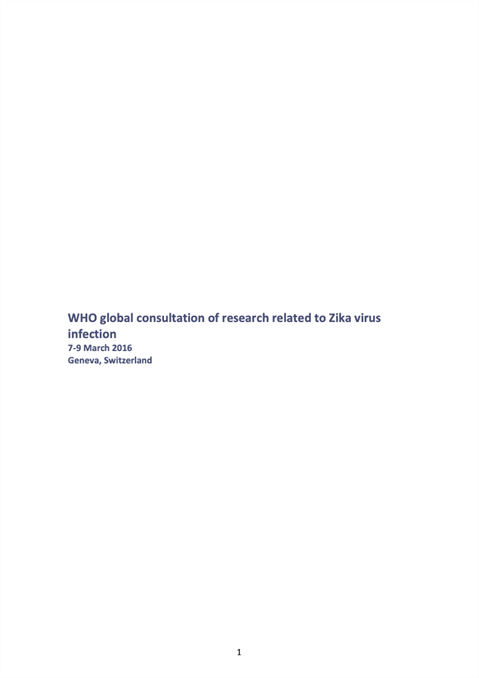WHO global consultation of research related to Zika virus infection

Overview
As part of the emergency response to recent outbreaks of Zika virus, WHO initiated an emergency research and development (R&D) response plan addressing needs for Zika virus vector control, in vitro diagnostics (IVDs), vaccines, and therapeutics, along with coordination of supportive research activities. As part of its commitment to assisting relevant R&D efforts and its role as global convener, WHO organised a meeting in Geneva on 7-9 March 2016, bringing stakeholders from relevant fields together to expedite the development of the products required for a rapid, robust response to Zika virus. This meeting was the first major international opportunity for experts in Zika virology, clinicians, product development experts, modellers, funders and others to take stock together, identify knowledge gaps, and discuss joint planning for accelerated product development and evaluation.
On the first day, the meeting received an overview of current knowledge of flaviviruses in general and Zika virus in particular, including their origins, spread, classifications and symptoms. While Zika is the current focus, increasing globalisation and more frequent contact with wild animals mean that other flavivruses—familiar or obscure—may well emerge. The current situation regarding microcephaly and Guillain-Barré syndrome in Brazil was outlined and compared to the recent Zika outbreak in French Polynesia, where the presence of Guillain-Barré syndrome has been retrospectively evaluated as 24 per 100 000 Zika infections. A review of the major outcomes of the recent PAHO meeting on Zika was presented; a report on this meeting is imminent.
The consultation then explored the pathogenesis of microcephaly as a medical condition, not a disease, and the different aetiologies of the condition. The potentially helpful role of modelling in the development of countermeasures was outlined, but it was emphasised that such modelling relies on data collected in the field and this data must be of high quality.
The second day looked at specific R&D product pipelines for Zika vaccines, diagnostics and vector control. The product development community has responded energetically to the need for these resources, and the pipeline is expanding rapidly. One major advance compared to the recent response to the 2014/15 Ebola epidemic seems to be the speed at which data is being shared.
